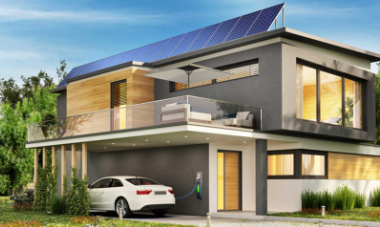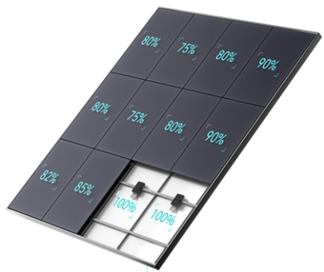The decision to install solar panels on your roof is a commendable step towards a more sustainable and energy-efficient future. However, the success of your solar endeavor hinges on careful planning and precise installation. In this article, we provide a comprehensive guide with essential tips for a successful solar panel installation on your roof.

1. Conduct a Thorough Roof Inspection
Before diving into solar roof installation, conduct a detailed inspection of your roof. Ensure that the roofing structure is in good condition, with no leaks or structural issues. Address any necessary repairs or maintenance before proceeding with solar panel installation to guarantee a solid foundation for your solar investment.
2. Evaluate Roof Orientation and Tilt
The efficiency of solar panels is notably influenced by the orientation and tilt of your roof. Ideally, solar panels should be positioned facing south to achieve optimal sunlight exposure in the Northern Hemisphere. Nevertheless, east and west-facing orientations can also prove to be effective. Additionally, consider the roof tilt angle to maximize energy production.
3. Assess Shading Issues
Identify potential shading issues that may affect solar panel performance. Overhanging trees, nearby structures, or obstructions can cast shadows on your solar panels, reducing their efficiency. Trim branches or consider shading mitigation techniques to ensure uninterrupted sunlight exposure.
4. Choose High-Quality Solar Panels
Invest in high-quality solar panels to ensure longevity and optimal performance. Different panels offer varying levels of efficiency, and advancements in technology continue to improve overall performance. Research reputable solar panel manufacturers and work with certified installers to select panels that suit your energy needs and budget.

5. Select the Right Mounting System
The mounting system plays a crucial role in the stability and efficiency of your solar installation. Roof-mounted solar panels can use fixed mounts or tracking systems that follow the sun's path. The choice depends on your location, roof structure, and budget. Consult with professionals to determine the most suitable mounting system for your specific circumstances.
6. Check Local Regulations and Permits
Before commencing installation, familiarize yourself with local regulations and obtain any necessary permits. Some areas may have specific guidelines regarding solar panel installations, including aesthetic considerations and setback requirements. Compliance with local regulations ensures a smooth installation process and legal adherence.
7. Work with Certified Solar Installers
Collaborate with certified and experienced solar installers for a seamless and professional installation. Certified installers have the expertise to assess your roof's suitability, design an efficient solar system, and navigate local permitting requirements. Their knowledge ensures that your installation complies with industry standards and safety protocols.
8. Ensure Roof Integrity and Waterproofing
Confirm that your roof is waterproof and that the installation process maintains its integrity. The mounting brackets and penetrations for wiring must be sealed correctly to prevent water leaks. Professional installers employ industry best practices to safeguard your roof against potential water damage.
9. Consider Future Maintenance
Factor in future maintenance requirements when planning your solar panel installation. Solar panels are low-maintenance, but periodic inspections and cleaning may be necessary. Ensure that the installation design allows for safe and accessible maintenance to prolong the life and efficiency of your solar system.
10. Maximize Solar Incentives and Rebates
Investigate the various solar incentives, tax credits, and rebates accessible to help mitigate the initial expenses of your installation. Numerous governmental bodies and utility providers provide financial incentives as a means to promote the adoption of solar energy. Seize the opportunities presented by these programs to improve the overall economic feasibility of your solar investment.
Conclusion
Installing solar panels on your roof is a transformative step towards energy independence and environmental responsibility. By following these essential tips, you can ensure a successful and efficient solar installation that aligns with your energy goals. From roof inspection and orientation assessment to working with certified installers and considering future maintenance, careful planning is key to unlocking the full potential of solar power for your home. Embrace the sun's energy wisely, and illuminate a sustainable future for your household.